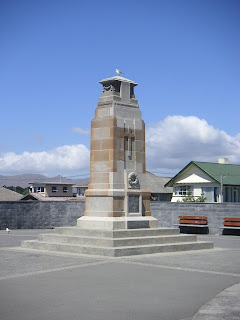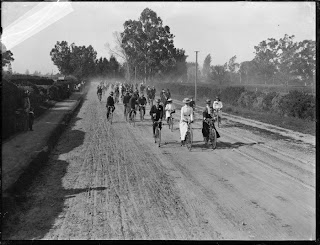District nurses, in uniform and with their bicycles, outside the South Durham Street headquarters in Christchurch. Left to right they are: E Browne, Sister Constance, M Palmer, M Rogers, Sibylla Emily Maude, D Savory, L Laing and Tolerton. Taken by the Steffano Webb Studio on the 29th of August, 1914.
Sibylla Maude, 1862-1935, born in Christchurch but who later trained in nursing in England returned to become matron of Christchurch hospital. She was the first to establish a system of district nursing in Christchurch after she chose to practise nursing rather than continue to deal with the dead hand of hospital bureaucracy. (See Nurse Maude's biography at the NZ Dictionary of Biography.)
Concerned for the health care of the poor, especially the aged and infirm, Nurse Maude set up an office in South Durham Street in the working class suburb of Sydenham in 1896 and in 1901 formed the Nurse Maude Association to provide in-home nursing for those in most need.
In the early days carrying out her practice on foot, burdened by her equipment and supplies, Nurse Maude and her nurses eventually were provided with a horse and cart for transport then bicycles. Apparently in later years she received a car but her driving was reputed to put other road users in fear of their lives.
In addition to in-home care, Nurse Maude established camps for the treatment of tuberculosis until a sanatorium could be built and in the 1918 Influenza epidemic she was placed in charge of coordinating nursing services.

Nurse Maude, circa 1900. Canterbury City Libraries
The Nurse Maude Association continues to carry out Nurse Maude's mission today with community, acute, and hospice nursing care. Several generations of this bird's extended family have both benefited from and contributed to Nurse Maude's good work for which he is sincerely grateful. The work of such communitarian organisations helps bridge the sometimes yawning gap between private effort and state largesse.

















































